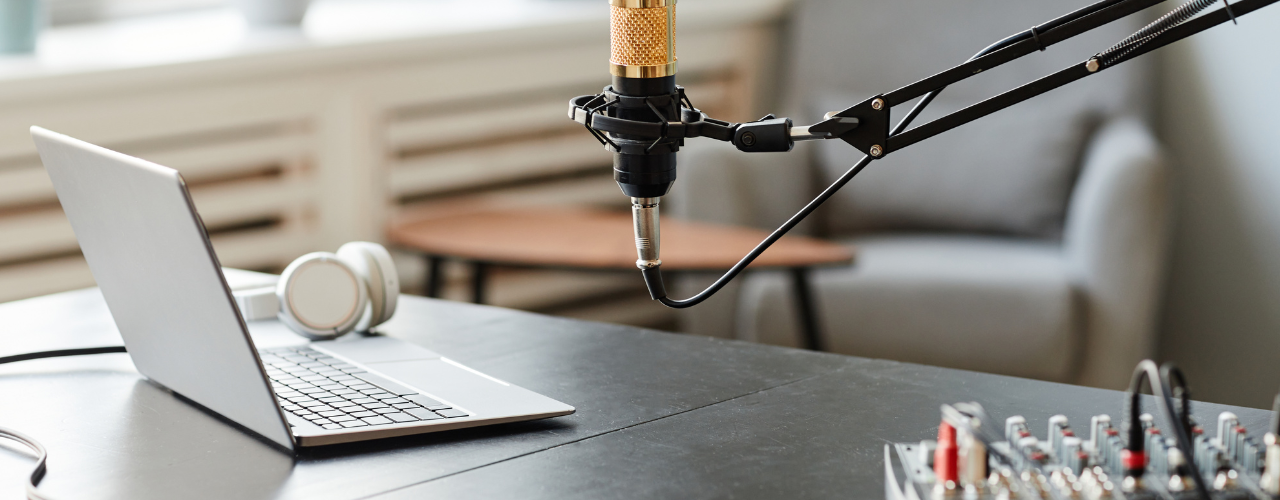Pro Techniques for Mastering Podcast Interviews

Ready to turn “meh” podcast interviews into “must-hear”? Get ready for the interview masterclass that will teach you how to charm the mic and fascinate your audience! Let’s reveal how to make your podcast the topic of brunch, the water cooler, and beyond, from preparation like a pro to asking great questions!
Podcast Best Practices
Entering podcasting? Let’s prepare with best practices more important than Monday morning coffee! Whether you’re hosting a solo session or a lively discussion, these golden rules will improve your podcasts and keep listeners coming back:
-
Consistency is King: Stick to a schedule that’s as predictable as after-work traffic. Your listeners will thank you for not playing hide and seek with episode releases.
-
Quality Over Quantity: Invest in good audio equipment because nothing tunes listeners out like poor sound quality. It’s the difference between a symphony and a kazoo ensemble.
-
Know Your Audience: If you want your podcast to be a smashing success, you need to know your audience inside and out. Do some serious research to find out who your listeners are. The more snug they are, the longer they will remain.
-
Active Participation is Crucial: Make your audience feel like old friends by engaging with them. Make them feel welcome, listen to what they have to say, and participate in group conversations.
-
Preparation Pays Off: Do your homework before each interview. A well-prepared host makes the conversation flow as smoothly as a gourmet espresso.
Interview Podcast Format
Making a fun podcast interview is a lot like planning the perfect dinner party: you need the right amount of order and spice to keep things interesting. Here’s how to set up your podcast so that people will want to eat up every word:
-
The Warm-Up: Kick things off with a light, intriguing intro that pulls listeners in. It’s your chance to set the stage and warm up the mic with a bit of backstory about your guest.
-
Deep Dive Dialogue: Ask questions that reveal more. Take it as the main course, full with insights and personal anecdotes to give your audience more to chew on.
-
Interactive Interludes: Sprinkle in listener questions or live comments if you’re streaming. This is like passing around the appetizers; everyone gets a taste and feels part of the experience.
-
The Takeaway: Summarize the main ideas or takeaways from the conversation. Like a delectable dessert, it satisfies the taste buds and makes a lasting impression on your audience.
-
Call to Action: End on a high note by clearly stating what the reader should do next. Make sure your listeners can continue the conversation after the episode has ended by providing multiple ways to subscribe, comment, or follow your guest.
How to Be a Good Podcast Host

Being a great podcast host requires more than just a smooth voice and a decent microphone; it’s about being an expert communicator. In order to connect with your audience on a deeper level, here’s how to listen to more than just your speakers:
-
Mastering Body Language: Even though your audience can’t see you, your body language speaks volumes to your guest. Maintain an open posture and nod your understanding. It sets a welcoming vibe and encourages open communication.
-
Active Listening: This isn’t just nodding along; it’s engaging with what your guest says, asking follow-up questions that dig deeper, and reflecting on their answers. It shows you care about their story, not just filling airtime.
-
Emotional Intelligence: Read conversational emotions. Knowing how to read tone and mood will help you keep the discussion lively.
-
Adaptability: Every guest is different, so be ready to switch up your approach. Some may need more prompting, while others will appreciate a host who can ride along with their tangents gracefully.
-
Genuine Interest: Showing interest in guests and topics is contagious. Your audience will share your enthusiasm. It elevates a Q&A to a captivating conversation.
How to Interview Someone for a Podcast
Conducting a podcast interview that captures and holds attention is much like directing a play; you need the right set, actors, and script to make magic happen. Here’s how to ensure everything’s in place for your interview to shine:
-
Setting the Scene: The environment where you record can hugely impact the quality of your audio and the comfort of your guest. Choose a quiet, well-insulated room. Soft furnishings can help dampen echo, making your conversation sound crisp and clear.
-
Tech Check: Ensure your recording equipment is up to par. Test microphones, headphones, and connection settings before your guest arrives. Having backups on hand, like an extra set of batteries or a second mic, can save you from unexpected hiccups.
-
Lighting the Way: If you’re also capturing video, lighting can significantly affect the quality. Soft, diffused lighting not only looks professional but also helps put your guest at ease. Avoid harsh lights that can cause squinting or discomfort.
-
Pre-Interview Prep: Send your guest a podcast interview template or outline beforehand. It helps them prepare and eases any nerves about unexpected questions. This transparency builds trust and encourages a more open, relaxed conversation.
-
Sound Check and Rehearsal: Do a quick sound check with your guest to adjust levels and ensure clarity. You can also use this time to break the ice, so when the record button hits, you’re both ready to dive into a natural flow.
Questions to Ask in a Podcast

Crafting questions for a podcast interview is like being a chef; you need the right ingredients to spice up the conversation and keep your listeners craving more. Here’s how to prepare questions that pack a punch:
-
The Provocative Starters: Kick off with questions that challenge your guest to think deeply or view things from a new angle. These aren’t just icebreakers; they set the tone for a dialogue that’s anything but vanilla.
-
The Story Unfolders: Use questions that encourage guests to open up and share personal stories or experiences. These are your “tell me about a time when…” prompts that get to the heart of the guest’s expertise or unique perspective.
-
The Devil’s Advocates: Occasionally, playing the devil’s advocate can lead to insightful discussions. Ask questions that prompt debate or require the guest to defend their stance on a topic. It’s all about stirring the pot in a respectful and constructive manner.
-
The Vision Explorers: Aim for questions that ask the guest to predict or explore future trends in their field. These “where do you see this going?” questions can open discussions about hopes, fears, and innovations that might shape the future.
-
The Takeaway Wrappers: Conclude with questions that summarize the essence of the conversation, giving your guest a chance to highlight the key message or advice they hope listeners will take away. This rounds out the session with a satisfying finish.
Tune In, Turn Up with Podpacer
As we wrap up our guide on mastering the art of the podcast interview, remember that great interviews don’t just happen; they’re crafted with intention, insight, and a bit of podcast magic. Whether you’re just starting out or looking to polish your skills, embracing these techniques will set your podcast apart and captivate your audience.
And when it comes to managing all the intricacies of podcast production, from guest research to episode planning, Podpacer is your go-to tool. Try Podpacer today and see how it transforms your podcasting workflow, making every episode smoother and every interview sharper. Let’s make your podcast the highlight of your listeners’ day!